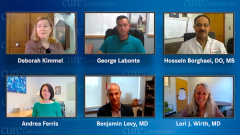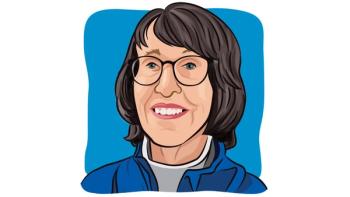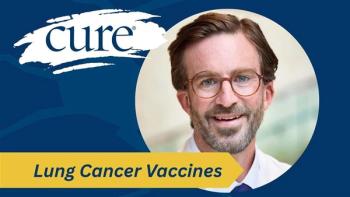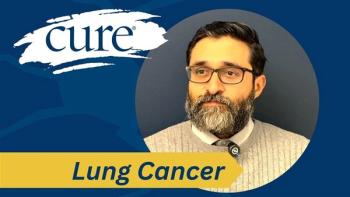
Biomarker Testing: Centralized Vs Local Labs
The pros and cons of conducting pathology assessments for comprehensive biomarker tests in central laboratories versus local laboratories.
Episodes in this series

Hossein Borghaei, DO, MS: What do you think about the idea of moving to localized molecular testing labs as opposed to large centralized labs? Do you think that might help to improve testing? I’m going to ask all three of you to comment on this. Do you think a move like this might be more helpful or is it the fact that we should be doing a lot more saying, at the minimum everybody should have liquid biopsy panels done? Even though we need tissue and blood samples to make sure we capture everyone, the molecular testing that comes from the blood might solve a lot of issues that we’re facing right now.
Andrea Ferris: I would like to defer to Dr Levy and Dr Wirth on this, but I think like everything else we’re talking about, the answer is, it’s complicated. One of the things that we’re advocating for is reimbursement for both blood and tissue rather than it being one or the other, as you are able to learn different things from each. Specifically, if it’s a type of lung cancer that doesn’t shed a lot into the blood, you’re not going to be able to diagnose that compared to other types of lung cancer that are non-shedders. I think that it’s important to have both, but we need to make sure that it’s reimbursed for both. So that’s a big barrier. I think with respect to moving locally versus centrally, it could help. The problem we face with this move is how these labs will be regulated. That’s a whole other legislation. The issue right now is who regulates the tests to make sure that the test is done, and the results giving are the correct answers. Because otherwise, people are going to make bad decisions from bad information. And so that too, makes the decision to move to localized testing more complicated. So, my answer is Conceptually yes, but the reality of how to do it, and how to do it well I think needs to be thoughtfully executed.
Hossein Borghaei, DO, MS: Great. Dr Levy, what do you think of that?
Benjamin Levy, MD: I would agree. I think it sounds nice on paper. I think it’s unclear whether moving physically, and the distancing of the labs, so you have a closer location with testing solves the challenges. I think still there are educational gaps there. I think if we could just get the word out about the test, that any lung cancer doctor or any medical oncologist can request tissue to be sent off to companies that do a good job and can do it within 28 days. I know that’s a long time, but we do, we have them commercially available and are covered by most insurances, including Medicaid and Medicare. I think to me, it’s more about an educational gap and just making sure that providers, and physicians, navigators, and nurse practitioners are aware of those companies and are aware of the process of how to send them out if they’re not doing so in-house.
Hossein Borghaei, DO, MS: Dr Wirth?
Lori Wirth, MD: Yeah, I agree. Outside of the large academic centers that have their own in-house assays, we’ve got great companies that do this already. This testing is complicated and resource intensive and we’ve got companies that have now been doing this for a number of years and doing it well. They’re competing with each other, so they’re going to be doing everything possible to bring down their turnaround times as much as possible. I think Dr Levy’s point is a good one, that the bigger problem is not solely ordering the testing for every single patient for whom it matters. And I love Ms. Ferris’s point that we don’t want to miss an actionable alteration for a single patient. So, even if we’re talking about a mutation that occurs in 2% of patients with lung cancer or advanced thyroid cancer, for those 2% of patients, identifying that alteration and coming up with the best therapy for those 2% of people will make all the difference in the world. It is worth it for those patients to be able to identify those alterations and get them on the right therapy, and that’s what matters most.
Hossein Borghaei, DO, MS: Great. So in the world of lung cancer we do a lot of retesting, especially at a time of progression for patients who are on molecular targeted drugs. Ms. Ferris pointed to the fact that we’re trying to make sure reimbursement for liquid and tissue is available. What about insurance issues regarding retesting? Are you having difficulties with that?
Benjamin Levy, MD: I think that’s where we’re getting a little more heterogeneity and coverage. We may run into some issues. While we have identified potential bona fide markers in the resistant setting, there are patients who are on targeted therapies who develop resistance. We want to identify what’s truly at play molecularly because that may inform a treatment decision or just as important, a clinical trial. I think we’re just beginning to scratch the surface on that. I am trying to do liquid and tissue biopsies on all of my patients in the resistant setting, but we have run into more issues there than there are for the treatment, I would say.
Hossein Borghaei, DO, MS: Okay. Ms. Ferris, anything else to say?
Andrea Ferris: No, I agree. It’s something that we’re working on.
Hossein Borghaei, DO, MS: We touched upon very briefly on the turnaround time, and I think that I can just say that I know we’re all trying to shorten this turnaround time and it is an issue for everybody. It’s anxiety inducing for patients and it is anxiety inducing for me as a clinician. I’m constantly waiting and checking to make sure that we get all the data, so hopefully we’ll make more advancements there.
This transcript has been edited for clarity.






